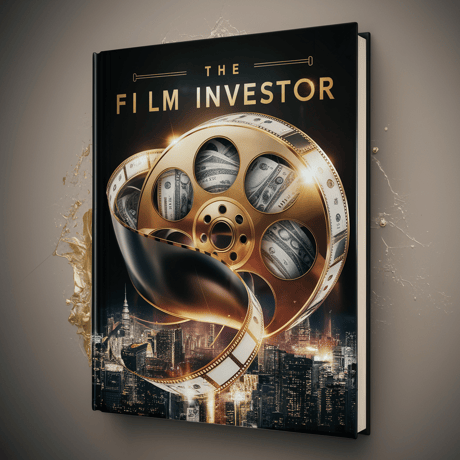
Understanding Film Financing for Potential Investors
Learn about film industry trends, investment types, budgeting, legal frameworks, and risk management in 'The Film Investor' guide. Get insights and tools to evaluate movie projects before investing.
Ted Chalmers
8/11/20243 min read


Understanding Film Financing for Potential Investors
Investing in movies can be fun and rewarding but also the subject of headline-grabbing frustration. "The Film Investor: Everything You Need to Know BEFORE You Write the Check!" demystifies movie investing, providing the novice film backer with an insider's skills. This handy guide is for anyone who wants to be an informed advocate in the boardroom when it comes to signing on the dotted line.
There are two main ways to put money into films – these are called an equity investment and debt investment. If you do this option, you buy shares in the film project. If the movie makes money, you get a share of the profits. Conversely, if it doesn’t do well you could lose your money. Debt investment is where you give the film project a loan with interest. You will get your money back whether the film is a huge blockbuster or crashes and burns from the beginning; this option is usually much less risky than the equity investment.
Budgeting is one aspect of the movie-making process. A guide instructs readers as to how the money is to be planned for all costs incurred. The pre-production costs are those incurred before the commencement of filming, like the writing of the script and searching for locations. The production cost is what is spent in the act of filmmaking, like the salaries of the actors and the renting of equipment. The post-production costs are the costs served after production, like editing and the marketing of the movie. Knowing the art of budgeting gives the individual an insight on where the money has been channeled to spend and the amount needed.
Analyzing a movie using this guide will help you determine how much it will earn because a lot of information is provided about the primary factors that influence box office earnings. First, the movie guide classifies movies into various genres . It declares that certain movies make more money than others which implies that it is important for anyone making an estimation to observe this before taking action. The target voters or the movie’s prospective audience plays a vital role in the film’s earnings. The movie may be well promoted or well advertised, or it may be shown in a specific season or dated when it is released. This may be a factor. The general economy and how it is doing, also has an impact. Finally, the competition and trends in the movie industry are important to look at. Similar movies within the same niche or genre are also factors to consider for your estimated guess.
Choosing the right movie to invest in is critical. The guide offers different ideas about what factors to look for in order to find the best projects. A story with an interesting message and a well-written script are a good starting point. An experienced director and popular actors can make a difference. A skilled production team can also help you to create the movie correctly. Finally, the movie should include the ingredients to attract many people to the cinema to see it. Following this criteria, you can choose projects that are more likely to succeed.
You can find some of this plain language on the investment side, particularly for your protection, beginning with a simple description of your investment agreement, a contract that spells out the terms to which you have consented with respect to the provision your funds and ownership of the film. Next we have the legal regulations under securities law that, primarily, are intended to make sure that no one is taking you for a ride by making sure that promoters of investments disclose key information and avoid scamming you. There is also a brief introduction to intellectual property rights, the work of productions that you are hoping to own such as the script and characters. And finally, tax incentives, which are easiest to educate yourself about. Several states and countries actually offer tax breaks when you invest in photos and films that are shot there
Investments always carry some risks, the guide promises, but these can be managed through various means. You can reduce risk by investing in more than one project at a time (diversification) and by buying insurance against problems that may arise. In the process of selecting the project in which to invest, it is necessary to check the credentials of what you are buying - a process called due diligence.
There are a host of real-life examples of films that worked and those that didn't, a few interviews with industry experts such as producers and financial analysts, also some checklists and templates to help you evaluate film projects with a great appetite for good sense and able to make the right investment decisions.
If you have ever considered investing in movies, here is your guide. The Film Investor: Everything You Didn’t Know You NEEDED To Know BEFORE You Wrote The Check! ;) Critically important and comprehensive in presenting every aspect of the industry — from types of investment, to budgets, to legalities, to risk management, and other key points — this is the must-read for all who seek to be successful in film financing. Get it for FREE!


